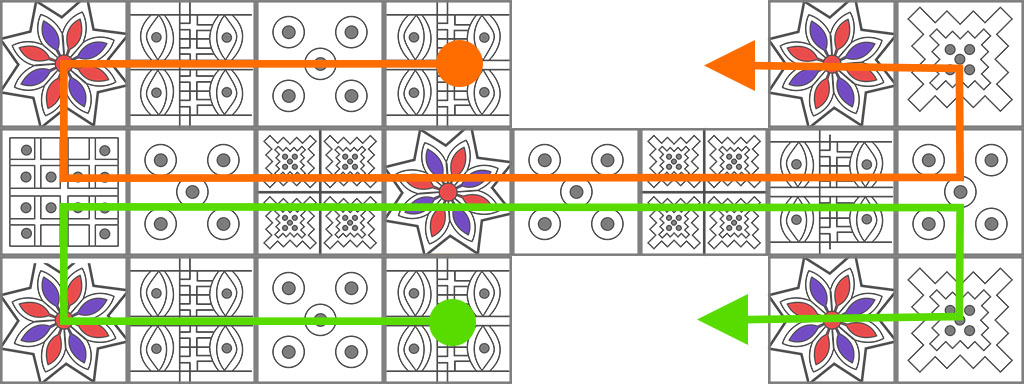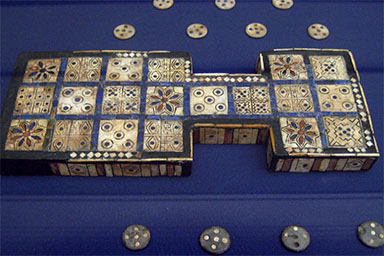History
The Game of Ur is one of the oldest games in the world, first played in ancient Mesopotamia during the early
third millennium BC. It derived its name from the place where it was first discovered.
English archaeologist Sir Leonard Woolley, during his excavations of the Royal Cemetery at Ur between 1926
and 1930, discovered five game boards of this game. Later, other archaeologists have also found copies of the
game in Iran, Syria, Turkey, Sri Lanka, Cyprus, and other places throughout the Middle East. In Tutankhamun's
tomb, four game boards with a similar resemblance to the Royal Game of Ur were also discovered.
The game was popular among all social classes. It is uncertain what contributed to the gradual demise of the
Game of Ur during late antiquity. One hypothesis suggests that it developed into backgammon.
The game was designed for two players, as two sets of playing pieces (black and white) were found with it.
For gameplay, a tetrahedral (four-sided) die was used.
The original rules of the game remain unknown, although a number of different scholars have interpreted them
based on a cuneiform tablet discovered in Iraq in 1880, now housed in the British Museum (Rm-III.6.b – 33333B). It
includes the number and names of the pawns and some information regarding the throws.
British Museum curator Irving Finkel, in the early 1980s, reconstructed the basic rules of how the game might
have been played in the second century BC based on this tablet. The tablet contained an almost complete set of
rules. Unfortunately, the original route the players should follow is still unknown.
There have been a few proposals by different researchers as to which path the players follow across the
board. I will introduce four specific adaptations to the rules: R.C. Bell/I. Finkel,
H.J.R. Murray's, J. Masters, D. Skiryuk.
R.C. Bell / I. Finkel
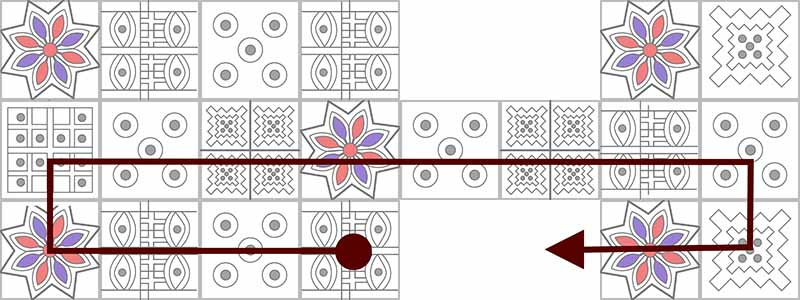
This path is the shortest of these four versions and is perhaps the most widely used direction, fitting
the description of the game found on a clay tablet.
H.J.R. Murray
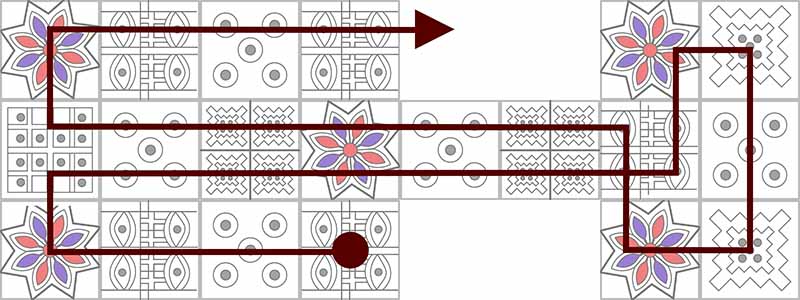
H.J.R. Murray assumed that the rosette squares gave an extra move. The distance between the rosettes
was equivalent to the maximum points of the dice.
J. Masters
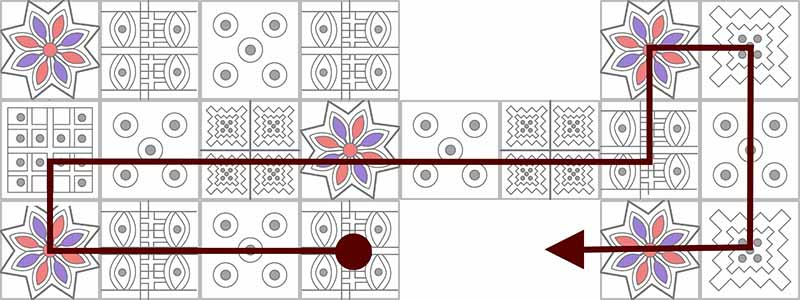
Game board maker, J. Masters, offered a compromise between the rules of Murray and Bell.
D. Skiryuk

D. Skiryuk presents another alternative with the exit of the board from the middle-left square. It
has a unique ornament on the board. He also believes that some squares had specific functions. The
"4-eyed" square allowed keeping up to four pieces at once, some squares turned pieces upside down, etc.
While the boards discovered varied in material, the arrangement of rosettes on each board remained
consistent. This uniformity has led some scholars to theorize that squares featuring a rosette serve a
specific function, potentially marking squares to be avoided. It is speculated that these squares might either
reset the player's counter back to the starting point or impose a fine, contributing to a pool of betting
money.
In unraveling the mysteries of the Royal Game of Ur, we journey through ancient boards and archaeological
clues, discovering a game that transcends time. As the echoes of this ancient past reach
us, we find ourselves immersed in a captivating blend of strategy, chance, and lost traditions. The Royal Game
of Ur, with its enigmatic rules and enduring appeal, stands as a testament to the enduring human fascination
with games that have spanned millennia, leaving an indelible mark on our shared history.
Bibliographical references
- R.C. Bell, Board and Table Games of Many Civilisations, 2 vols. London, 1960, 1969 [reprinted with
corrections and revisions by Dover Books, 1979].
- Irving L. Finkel, “On the rules for the Royal Game of Ur.” In Ancient Board Games in Perspective: Papers
from the 1990 British Museum Colloquium, with Additional Contributions. London: British Museum, 2007, pp.
16-32.
- H.J.R. Murray, A History of Board-games Other Than Chess, Oxford: Oxford University Press, 1952, pp.
19-21.
